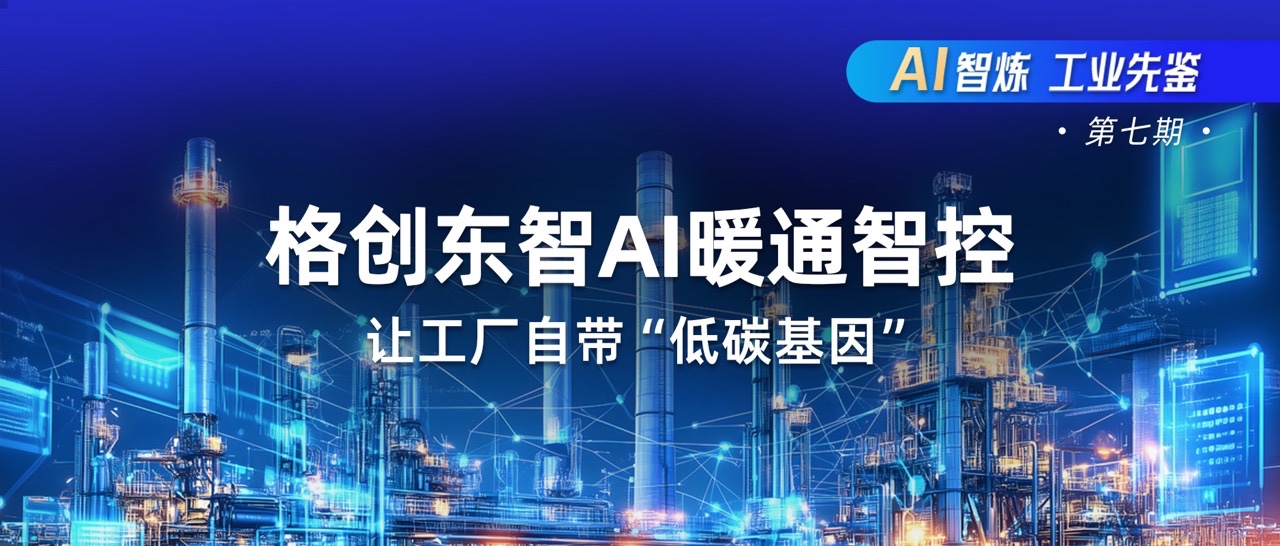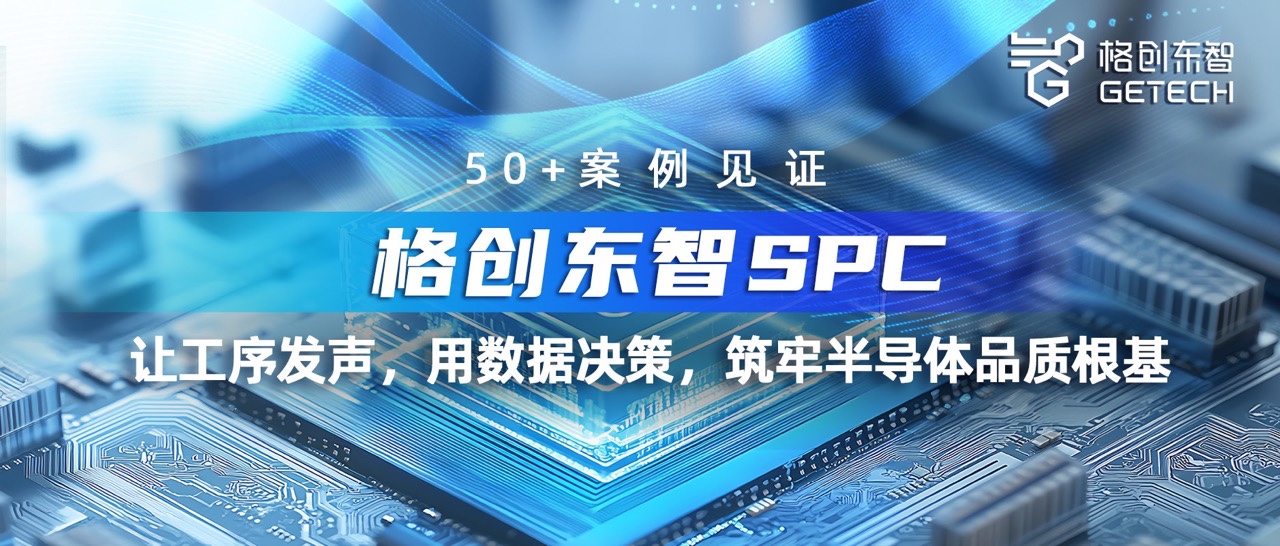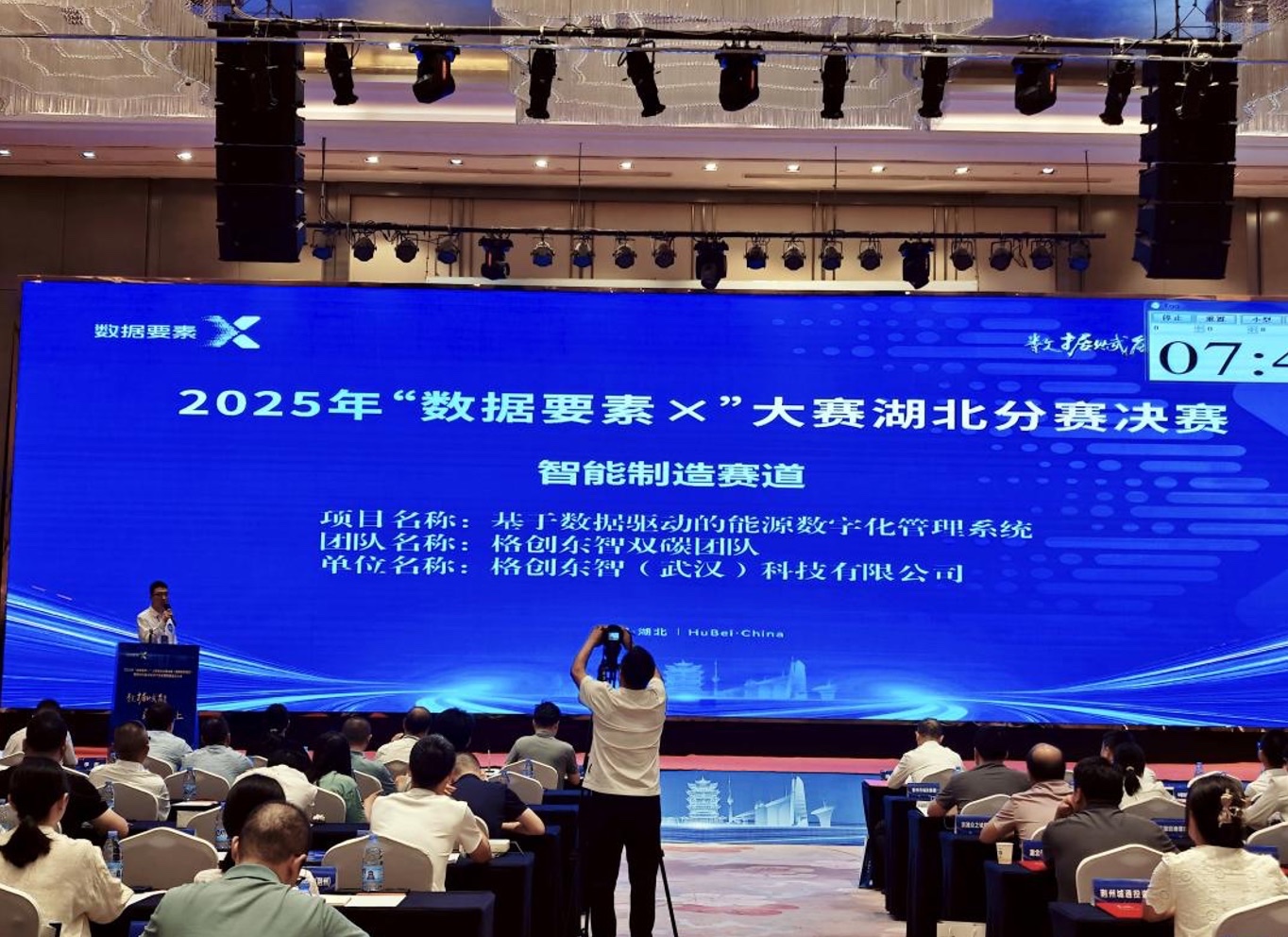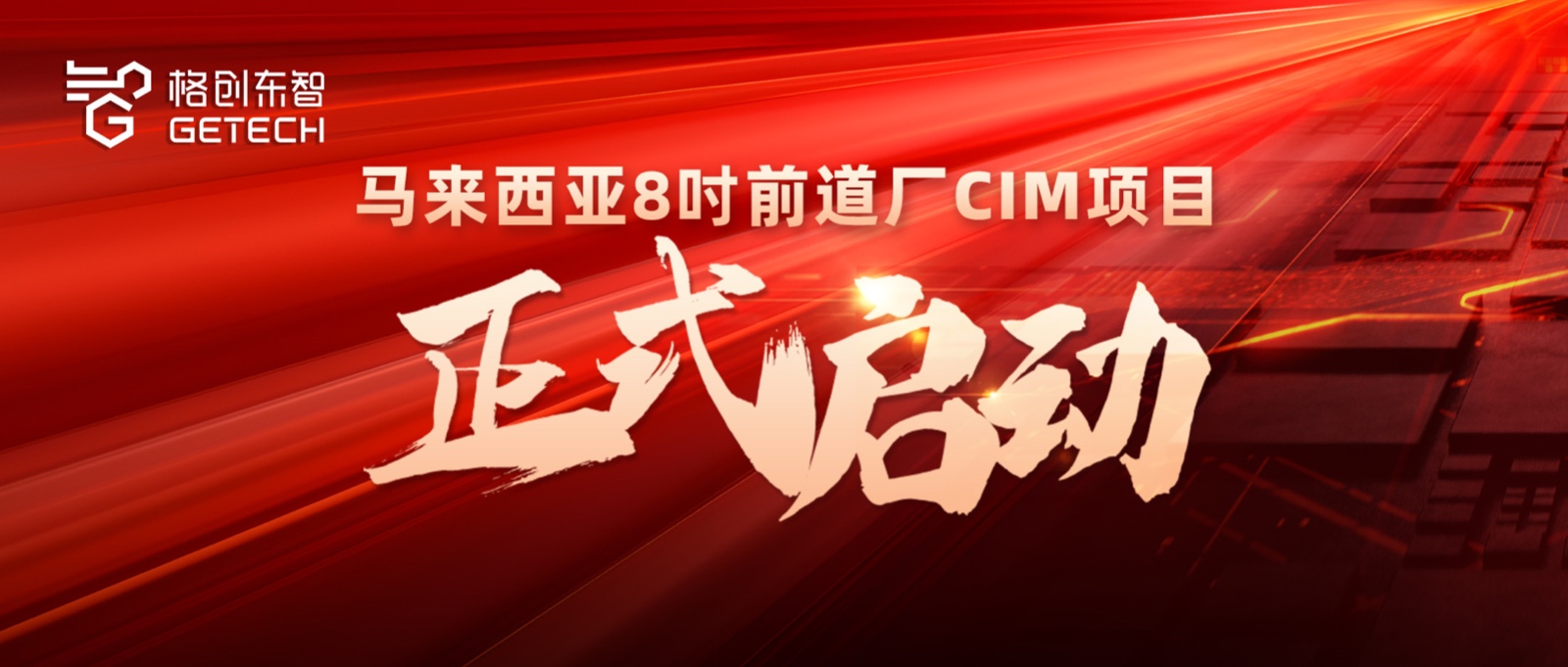GeChuangDongZhi CEO He Jun Talks Industrial Internet with DongDong Notes -- Replication
In 2019, China's industrial internet market size reached 610.91 billion yuan, and by 2030, this number is expected to hit 1.5 trillion US dollars. Such rapid growth stems from the revolution of the industrial internet. Unlike past informatization in manufacturing, which merely attached IT methods to the industry, the industrial internet deeply integrates and innovates with technologies like 5G, AI, big data, and cloud computing, forming a completely new manufacturing model. Future industrial internet business models may undergo earth-shaking changes compared to traditional manufacturing, but this transformation is evolving through continuous exploration.
After several waves of vigorous development, the industrial internet has entered its second phase, with 5G being a key driver of this stage.
At the recent '2020 World 5G Conference' forum on '5G and Industrial Internet,' Academician Wu Hequan of the Chinese Academy of Engineering stated: 'The integration of 5G and industrial internet has progressed from 5G+ industrial internet (connecting workpieces and equipment on production lines via 5G) to 5G× industrial internet (integrating into enterprise networks with cloud-edge-device synergy), unleashing the multiplier effect of 5G and industrial internet.'
Clearly, the deep integration of 5G and industrial internet will be a breakthrough tool for accelerating industrial development in the near future.
The history of industrial development is never short of miracles, such as Ford's assembly line that mass-produced the American middle class and Deming's total quality management that created Japan's manufacturing myth. Behind these, there has always been a hand of innovation. Today, this hand is represented by the fourth industrial revolution, breakthroughs in AI, virtual reality, quantum information technology, and more.
Thus, a global competition around the fourth industrial revolution is heating up. In Europe, Industry 4.0 is in full swing; in the US, the industrial internet is gaining momentum. Meanwhile, China's smart manufacturing is also upgrading. Enterprises worldwide are transforming in various directions. Superficially, countries are upgrading manufacturing; at a deeper level, it's a revolution from manufacturing to smart manufacturing. This technology-driven change in industrial models will determine future global economic status and strength—a new round of great power competition.
Looking back over the past century, Europe, Japan, the US, and China have each led manufacturing at different stages. Facing the fourth industrial revolution, while there may be gaps in manufacturing levels, everyone is essentially at the same starting line for this disruptive revolution. Today, the industrial internet has become a bridge leading us into the fourth industrial revolution, and in the process, it is itself undergoing transformation.
In China, over the past few years, leading manufacturers with urgent transformation needs have explored and navigated through the first stage, the nascent period.
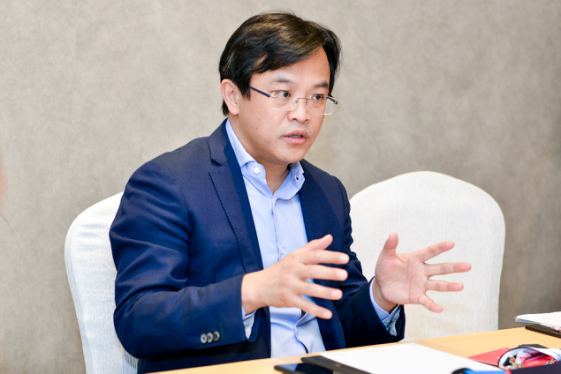
He Jun, Vice President of TCL Industries and CEO of GeChuangDongZhi, during a media group interview
During this period, industrial enterprises began adopting various new technologies, gradually implementing application cases, and enhancing their recognition of the necessity of industrial internet. 'Especially from awakening IT departments to awakening manufacturing departments,' noted He Jun, Vice President of TCL Industries and CEO of GeChuangDongZhi. He believes that on the demand side, industrial enterprises' understanding and role of industrial internet新技术 have undergone earth-shaking changes. 'Industrial internet is the core of the future, driving manufacturing to enhance core skills and enabling ordinary manufacturing to undergo revolutionary changes through transformation. For the entire industry, industrial internet is like how internet retail颠覆ed traditional retail—not only through new technology implementation but also through massive changes in business models.'
He Jun believes that after the exploratory first stage, industrial internet development has entered the second phase, marked by several changes. First, a return to business essence, shifting focus from platforms to applications that solve production pain points and deliver real value. Second, verticalization, addressing industry differences with targeted solutions. Third, moving from light to heavy; while fragmented applications were common before, the future focus is on embedded software, which is key to solving supply chain bottlenecks and core capabilities.
Amid the industrial internet wave, He Jun has witnessed dramatic changes over these three years and is optimistic about the future: 'China has very rich application scenarios. Once Chinese enterprises are motivated, development will be very fast. In two or three years, they can compete with world-class platforms. It's like To C applications—China's internet innovation speed is very fast and has reached the global forefront.'
Three years ago, the pioneers of industrial internet platforms were in the US and Europe. After three years of exploration and running, Chinese industrial enterprises have not only implemented一批优秀的应用 but also cultivated a group of top suppliers, including GeChuangDongZhi, incubated by TCL.
The domestic internet landscape is complex due to multiple factions. When industrial internet first emerged, domestic forces were divided into two main groups: those incubated by internet giants and those from traditional industry信息化 service providers. Some vividly describe this as: two forces attacking the same hill, one from the south slope and the other from the north.
This faction division becomes even more complex in the industrial internet arena. Initially dominated by foreign companies like GE and Siemens, Chinese enterprises quickly formed different schools of suppliers within three years. Companies like GeChuangDongZhi, incubated from manufacturing enterprises, form one school; traditional internet companies like Tencent and Alibaba form another; traditional IT software and hardware vendors make up a third; small startups constantly涌入, creating a fourth school; and industrial automation enterprises form a fifth.
仔细观察这五大流派, they either deeply understand manufacturing and excel at identifying traditional enterprises' business pain points, or specialize in technological innovation to guide traditional enterprises through transformation. Each school has its strengths and weaknesses. Currently, it's quite a混战之状, resembling the Spring and Autumn and Warring States period, and will gradually integrate and淘汰 based on customer needs.
GeChuangDongZhi belongs to the school born within manufacturing enterprises, but it has an inclusive nature.
First, GeChuangDongZhi, born from a manufacturing enterprise, has strong practical experience. TCL's manufacturing capabilities have always been at the forefront among tech companies. Recently, TCL has been extending into upstream core technologies of the产业链, especially in high-end manufacturing areas like semiconductor display and materials, semiconductor, and new energy materials, which has forced TCL's manufacturing capabilities to continuously upgrade.
In smart manufacturing, TCL uses big data and industrial internet to enhance core industrial capabilities. For example, TCL华星's panel factory has basically achieved full automation and is building higher-level digital and intelligent production. Thus, as a new force in the industrial internet field, GeChuangDongZhi is backed by TCL's nearly 40 years of multi-scenario production experience. Leveraging this, GeChuangDongZhi has developed three core platforms: IoT, AI, and big data, as well as two enabling mid-platforms: digital mid-platform and industrial application intelligent platform, and has made significant achievements in smart applications and equipment.
Born from manufacturing and giving back to manufacturing, GeChuangDongZhi can prove its capabilities with experience and results, making it more acceptable to high-end manufacturing enterprise clients.
Second, although born from manufacturing, GeChuangDongZhi's thinking is not limited to manufacturing but focuses on deep integration of technology and industry. This is reflected in its talent strategy, which emphasizes external recruitment and group transfers for 'talent integration.' Compared to other schools, GeChuangDongZhi's team is more complete, diverse, and rich.
Explaining this, He Jun said: 'The essence of industrial internet is to achieve overall data integration through IT and OT fusion, leading to fundamental changes in management methods.' However, with numerous manufacturing industries and complex processes, achieving IT and OT fusion requires not only manufacturing experts with rich industry experience but also IT professionals with deep digital R&D backgrounds.
Currently, GeChuangDongZhi has nearly 900 employees, including IT professionals from high-tech companies like Cisco, Huawei, IBM, Alibaba, and Microsoft, as well as industrial experts from Siemens, Haier, Midea, etc.
Discussing diverse talent integration, He Jun introduced: 'We want to become the Google of the industrial internet, creating an innovative atmosphere where top talents, whether from manufacturing or IT backgrounds, can work happily at GeChuangDongZhi. To achieve this, we need to integrate manufacturing and IT cultures to attract more cross-border talents.'
The result of this diverse talent integration is that GeChuangDongZhi更容易实现创新. Since mid-2019, GeChuangDongZhi has implemented hundreds of industrial internet projects, including many innovative ones.
In early 2020, the COVID-19 outbreak caused production and delivery issues for many enterprises. Especially for工业企业高度依赖于工业机器人生产, as equipment service providers couldn't reach sites, many industrial robots on production lines couldn't be maintained timely, posing significant risks to production.
Facing this challenge, GeChuangDongZhi's R&D team quickly developed the 'Industrial Robot Remote Real-Time Operation and Maintenance APP' system to address sudden maintenance issues. Based on the DongZhi Industrial Application Intelligent Platform, the APP was launched in only 40% of the industry's average development cycle using low-code, drag-and-drop graphical development. After the pandemic eased, this solution won the top prize at the 2020 China (Tianjin) Industrial APP Innovation Application Competition.
Currently, with increasingly vibrant smart application scenarios, various application innovations are becoming a trend. For domestic industrial internet to achieve faster development, the urgent task is to develop more innovative applications.
He Jun predicted the outcomes of adopting these innovative applications: 'Manufacturing enterprises will eventually experience the results of this transformation: factory personnel will no longer be traditional engineers but those who truly understand models and use software platforms to control equipment maintenance and quality analysis. Equipment management and quality analysis will no longer use traditional methods but rather technical reforms or new IT tools.'

TCL 5G+ Industrial Internet
'5G would have no value without industrial (including manufacturing) application scenarios, and industrial internet can only unleash greater value with 5G,' said He Jun, emphasizing that integration is paramount. 'The combination of the two can generate greater vitality.'
5G technology, with its enhanced mobile broadband, massive connectivity, ultra-reliability, and low latency, has natural affinity with emerging technologies like edge computing and IoT, making its application areas more focused on enterprise-level uses. As 5G enters the application phase, it, along with industrial internet, becomes the cornerstone of Industry 4.0. Only by building the nervous system of Industry 4.0 through 5G+ industrial internet can AI, big data, and other algorithms be supplemented to optimize industrial enterprise management systems globally.
Due to high initial infrastructure costs for 5G networks and a lack of applications addressing user pain points in '5G+ industrial internet' solutions, its early development was not smooth. However, this provided a rare opportunity for GeChuangDongZhi.
He Jun emphasized: 'We focus on high-end manufacturing. Currently, there are very few leading industrial internet enterprises in China focused on high-end manufacturing. TCL华星 has provided us with the soil to grow, enabling us to become an industrial internet enterprise serving high-end manufacturing, represented by semiconductors.'
In high-end manufacturing, the datafication of everything, along with data richness, accuracy, and analytical capabilities, will become key factors influencing future competitive advantages. Thus, high-end manufacturing has the capability and desire to adopt high-end solutions like '5G+ industrial internet' to enhance core competitiveness, leading the way in breaking through for '5G+ industrial internet.'
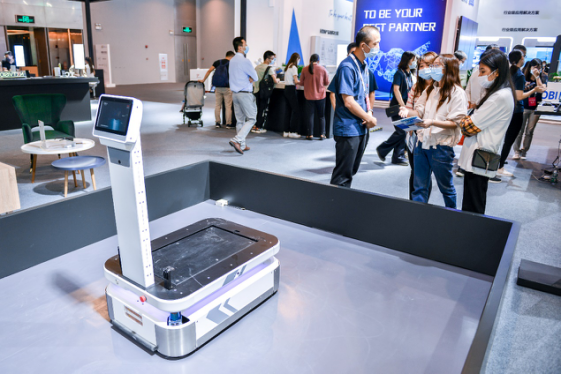
TCL Intelligent Logistics Equipment—AMR Vehicle
It is reported that most of GeChuangDongZhi's implemented 5G+ industrial internet projects are located in TCL's smart application demonstration park in Tonghu, Huizhou. He Jun introduced that in this 5G demo park, they conducted 5G pilots, launching applications like 5G+AR and 5G+AMR. '5G's fast transmission speed allows embedding algorithms in AMR vehicles, enabling more complex operations and liberating human hands, feet, and most of the brain—something unimaginable in the past.'
The 2020 pandemic significantly impacted manufacturing enterprises' business management and delivery. In response, GeChuangDongZhi developed a remote delivery system based on 5G+AR technology. Leveraging 5G's high bandwidth, low latency, and massive connectivity, it构建远程AR验收场景, allowing customers to immersively experience equipment indicators and performance, greatly simplifying the delivery and acceptance process. GeChuangDongZhi is also seizing this opportunity to expand 5G+AR scenario-based services to other industries.
Discussing the breakthrough of 5G+ industrial internet, He Jun said: '5G's characteristics are clear. Applied to industrial internet, main scenarios are at the edge端. In high-end manufacturing, especially semiconductor chip industry, large amounts of data need collection, demanding high edge端 requirements and large quantities. 5G can help process massive data faster at the edge. We have already made breakthroughs in industrial vision using 5G technology. Next, we hope 5G+ industrial internet can be applied in more scenarios.'
Besides technological integration, there is also integration of technology and business, meaning integration outcomes must materialize in model innovation. Previous industrial informatization attached IT as a tool to manufacturing, so IT and business departments were separate, with IT's task being to improve business department efficiency. In the future, IT and business departments must deeply integrate and jointly innovate to create全新模式 that颠覆 past manufacturing models. For example, manufacturing that grew relying on人口红利 had production lines built for people. The future will be unmanned factories, lights-out factories, with production lines redesigned based on unmanned logic.
Additionally, achieving integration requires an open mindset. 'For 5G+ industrial internet to develop applications, one company can't do it alone; it needs to be done more openly,' He Jun believes. As platforms enrich, partners at different levels will be needed—these partners might be in coopetition; even competitors in some areas, they can collaborate whenever needed.
In DongDong's view, over the past few years, GeChuangDongZhi has explored many 'uncharted territories' in 5G+ industrial internet integration, landing rich applications through technological fusion. More importantly, during this process, ideological awareness has advanced, understanding the importance of technology-business integration, and embracing new industry waves with an open, integrated mindset.
'The country hopes leading tech enterprises like TCL, through successful application implementations,降低技术门槛和应用成本后对外输出和共享, sharing with other manufacturing enterprises. So for GeChuangDongZhi, we aim to set benchmarks, demonstrate, and promote—turning 5G+ industrial internet solutions into products, lowering usage barriers and costs, making them reusable solutions. This is our response to national calls and social responsibility,' He Jun stated, believing GeChuangDongZhi has the ability and obligation to contribute more to China's industrial revolution.
He Jun emphasized: 'GeChuangDongZhi's mission is: 格物智,创兴邦 (Explore Wisdom, Create Prosperity for the Nation). Among these, 创兴邦 means hoping to serve the country through industry, using TCL's accumulated experience over the years to contribute to the nation. Our goal is to develop 2-3 industrial software that makes Chinese people proud. By 2025, we aim to become a national-level platform—not pursuing rankings, but hoping in the eyes of policymakers, the industry, and customers, we are recognized as a national-level platform.'
【Conclusion】
From Ford's assembly line to Deming's total quality management, industrial innovation has shown us miracles time and again. As Industry 4.0 emerges, we have new tools like industrial internet and 5G. Beyond these, industrial enterprises most need understanding of the industry and the blending of innovative culture with rigorous manufacturing culture to generate more innovative applications based on industrial internet. From this perspective, GeChuangDongZhi, with its multifaceted conditions, is poised to bring more surprises. Perhaps today, we are witnessing the arrival of a major transformation in Chinese manufacturing.
After several waves of vigorous development, the industrial internet has entered its second phase, with 5G being a key driver of this stage.
At the recent '2020 World 5G Conference' forum on '5G and Industrial Internet,' Academician Wu Hequan of the Chinese Academy of Engineering stated: 'The integration of 5G and industrial internet has progressed from 5G+ industrial internet (connecting workpieces and equipment on production lines via 5G) to 5G× industrial internet (integrating into enterprise networks with cloud-edge-device synergy), unleashing the multiplier effect of 5G and industrial internet.'
Clearly, the deep integration of 5G and industrial internet will be a breakthrough tool for accelerating industrial development in the near future.
Three Years of Dramatic Change: China's Industrial Internet Moves Past the Nascent Stage
The history of industrial development is never short of miracles, such as Ford's assembly line that mass-produced the American middle class and Deming's total quality management that created Japan's manufacturing myth. Behind these, there has always been a hand of innovation. Today, this hand is represented by the fourth industrial revolution, breakthroughs in AI, virtual reality, quantum information technology, and more.
Thus, a global competition around the fourth industrial revolution is heating up. In Europe, Industry 4.0 is in full swing; in the US, the industrial internet is gaining momentum. Meanwhile, China's smart manufacturing is also upgrading. Enterprises worldwide are transforming in various directions. Superficially, countries are upgrading manufacturing; at a deeper level, it's a revolution from manufacturing to smart manufacturing. This technology-driven change in industrial models will determine future global economic status and strength—a new round of great power competition.
Looking back over the past century, Europe, Japan, the US, and China have each led manufacturing at different stages. Facing the fourth industrial revolution, while there may be gaps in manufacturing levels, everyone is essentially at the same starting line for this disruptive revolution. Today, the industrial internet has become a bridge leading us into the fourth industrial revolution, and in the process, it is itself undergoing transformation.
In China, over the past few years, leading manufacturers with urgent transformation needs have explored and navigated through the first stage, the nascent period.

He Jun, Vice President of TCL Industries and CEO of GeChuangDongZhi, during a media group interview
During this period, industrial enterprises began adopting various new technologies, gradually implementing application cases, and enhancing their recognition of the necessity of industrial internet. 'Especially from awakening IT departments to awakening manufacturing departments,' noted He Jun, Vice President of TCL Industries and CEO of GeChuangDongZhi. He believes that on the demand side, industrial enterprises' understanding and role of industrial internet新技术 have undergone earth-shaking changes. 'Industrial internet is the core of the future, driving manufacturing to enhance core skills and enabling ordinary manufacturing to undergo revolutionary changes through transformation. For the entire industry, industrial internet is like how internet retail颠覆ed traditional retail—not only through new technology implementation but also through massive changes in business models.'
He Jun believes that after the exploratory first stage, industrial internet development has entered the second phase, marked by several changes. First, a return to business essence, shifting focus from platforms to applications that solve production pain points and deliver real value. Second, verticalization, addressing industry differences with targeted solutions. Third, moving from light to heavy; while fragmented applications were common before, the future focus is on embedded software, which is key to solving supply chain bottlenecks and core capabilities.
Amid the industrial internet wave, He Jun has witnessed dramatic changes over these three years and is optimistic about the future: 'China has very rich application scenarios. Once Chinese enterprises are motivated, development will be very fast. In two or three years, they can compete with world-class platforms. It's like To C applications—China's internet innovation speed is very fast and has reached the global forefront.'
Three years ago, the pioneers of industrial internet platforms were in the US and Europe. After three years of exploration and running, Chinese industrial enterprises have not only implemented一批优秀的应用 but also cultivated a group of top suppliers, including GeChuangDongZhi, incubated by TCL.
Five Major Schools Co-existing,
Industrial Internet Enters the Spring and Autumn and Warring States Era
The domestic internet landscape is complex due to multiple factions. When industrial internet first emerged, domestic forces were divided into two main groups: those incubated by internet giants and those from traditional industry信息化 service providers. Some vividly describe this as: two forces attacking the same hill, one from the south slope and the other from the north.
This faction division becomes even more complex in the industrial internet arena. Initially dominated by foreign companies like GE and Siemens, Chinese enterprises quickly formed different schools of suppliers within three years. Companies like GeChuangDongZhi, incubated from manufacturing enterprises, form one school; traditional internet companies like Tencent and Alibaba form another; traditional IT software and hardware vendors make up a third; small startups constantly涌入, creating a fourth school; and industrial automation enterprises form a fifth.
仔细观察这五大流派, they either deeply understand manufacturing and excel at identifying traditional enterprises' business pain points, or specialize in technological innovation to guide traditional enterprises through transformation. Each school has its strengths and weaknesses. Currently, it's quite a混战之状, resembling the Spring and Autumn and Warring States period, and will gradually integrate and淘汰 based on customer needs.
GeChuangDongZhi belongs to the school born within manufacturing enterprises, but it has an inclusive nature.
First, GeChuangDongZhi, born from a manufacturing enterprise, has strong practical experience. TCL's manufacturing capabilities have always been at the forefront among tech companies. Recently, TCL has been extending into upstream core technologies of the产业链, especially in high-end manufacturing areas like semiconductor display and materials, semiconductor, and new energy materials, which has forced TCL's manufacturing capabilities to continuously upgrade.
In smart manufacturing, TCL uses big data and industrial internet to enhance core industrial capabilities. For example, TCL华星's panel factory has basically achieved full automation and is building higher-level digital and intelligent production. Thus, as a new force in the industrial internet field, GeChuangDongZhi is backed by TCL's nearly 40 years of multi-scenario production experience. Leveraging this, GeChuangDongZhi has developed three core platforms: IoT, AI, and big data, as well as two enabling mid-platforms: digital mid-platform and industrial application intelligent platform, and has made significant achievements in smart applications and equipment.
Born from manufacturing and giving back to manufacturing, GeChuangDongZhi can prove its capabilities with experience and results, making it more acceptable to high-end manufacturing enterprise clients.
Second, although born from manufacturing, GeChuangDongZhi's thinking is not limited to manufacturing but focuses on deep integration of technology and industry. This is reflected in its talent strategy, which emphasizes external recruitment and group transfers for 'talent integration.' Compared to other schools, GeChuangDongZhi's team is more complete, diverse, and rich.
Explaining this, He Jun said: 'The essence of industrial internet is to achieve overall data integration through IT and OT fusion, leading to fundamental changes in management methods.' However, with numerous manufacturing industries and complex processes, achieving IT and OT fusion requires not only manufacturing experts with rich industry experience but also IT professionals with deep digital R&D backgrounds.
Currently, GeChuangDongZhi has nearly 900 employees, including IT professionals from high-tech companies like Cisco, Huawei, IBM, Alibaba, and Microsoft, as well as industrial experts from Siemens, Haier, Midea, etc.
Discussing diverse talent integration, He Jun introduced: 'We want to become the Google of the industrial internet, creating an innovative atmosphere where top talents, whether from manufacturing or IT backgrounds, can work happily at GeChuangDongZhi. To achieve this, we need to integrate manufacturing and IT cultures to attract more cross-border talents.'
The result of this diverse talent integration is that GeChuangDongZhi更容易实现创新. Since mid-2019, GeChuangDongZhi has implemented hundreds of industrial internet projects, including many innovative ones.
In early 2020, the COVID-19 outbreak caused production and delivery issues for many enterprises. Especially for工业企业高度依赖于工业机器人生产, as equipment service providers couldn't reach sites, many industrial robots on production lines couldn't be maintained timely, posing significant risks to production.
Facing this challenge, GeChuangDongZhi's R&D team quickly developed the 'Industrial Robot Remote Real-Time Operation and Maintenance APP' system to address sudden maintenance issues. Based on the DongZhi Industrial Application Intelligent Platform, the APP was launched in only 40% of the industry's average development cycle using low-code, drag-and-drop graphical development. After the pandemic eased, this solution won the top prize at the 2020 China (Tianjin) Industrial APP Innovation Application Competition.
Currently, with increasingly vibrant smart application scenarios, various application innovations are becoming a trend. For domestic industrial internet to achieve faster development, the urgent task is to develop more innovative applications.
He Jun predicted the outcomes of adopting these innovative applications: 'Manufacturing enterprises will eventually experience the results of this transformation: factory personnel will no longer be traditional engineers but those who truly understand models and use software platforms to control equipment maintenance and quality analysis. Equipment management and quality analysis will no longer use traditional methods but rather technical reforms or new IT tools.'
5G+ Leads the Integration Change in Industrial Internet

TCL 5G+ Industrial Internet
'5G would have no value without industrial (including manufacturing) application scenarios, and industrial internet can only unleash greater value with 5G,' said He Jun, emphasizing that integration is paramount. 'The combination of the two can generate greater vitality.'
5G technology, with its enhanced mobile broadband, massive connectivity, ultra-reliability, and low latency, has natural affinity with emerging technologies like edge computing and IoT, making its application areas more focused on enterprise-level uses. As 5G enters the application phase, it, along with industrial internet, becomes the cornerstone of Industry 4.0. Only by building the nervous system of Industry 4.0 through 5G+ industrial internet can AI, big data, and other algorithms be supplemented to optimize industrial enterprise management systems globally.
Due to high initial infrastructure costs for 5G networks and a lack of applications addressing user pain points in '5G+ industrial internet' solutions, its early development was not smooth. However, this provided a rare opportunity for GeChuangDongZhi.
He Jun emphasized: 'We focus on high-end manufacturing. Currently, there are very few leading industrial internet enterprises in China focused on high-end manufacturing. TCL华星 has provided us with the soil to grow, enabling us to become an industrial internet enterprise serving high-end manufacturing, represented by semiconductors.'
In high-end manufacturing, the datafication of everything, along with data richness, accuracy, and analytical capabilities, will become key factors influencing future competitive advantages. Thus, high-end manufacturing has the capability and desire to adopt high-end solutions like '5G+ industrial internet' to enhance core competitiveness, leading the way in breaking through for '5G+ industrial internet.'

TCL Intelligent Logistics Equipment—AMR Vehicle
It is reported that most of GeChuangDongZhi's implemented 5G+ industrial internet projects are located in TCL's smart application demonstration park in Tonghu, Huizhou. He Jun introduced that in this 5G demo park, they conducted 5G pilots, launching applications like 5G+AR and 5G+AMR. '5G's fast transmission speed allows embedding algorithms in AMR vehicles, enabling more complex operations and liberating human hands, feet, and most of the brain—something unimaginable in the past.'
The 2020 pandemic significantly impacted manufacturing enterprises' business management and delivery. In response, GeChuangDongZhi developed a remote delivery system based on 5G+AR technology. Leveraging 5G's high bandwidth, low latency, and massive connectivity, it构建远程AR验收场景, allowing customers to immersively experience equipment indicators and performance, greatly simplifying the delivery and acceptance process. GeChuangDongZhi is also seizing this opportunity to expand 5G+AR scenario-based services to other industries.
Discussing the breakthrough of 5G+ industrial internet, He Jun said: '5G's characteristics are clear. Applied to industrial internet, main scenarios are at the edge端. In high-end manufacturing, especially semiconductor chip industry, large amounts of data need collection, demanding high edge端 requirements and large quantities. 5G can help process massive data faster at the edge. We have already made breakthroughs in industrial vision using 5G technology. Next, we hope 5G+ industrial internet can be applied in more scenarios.'
Besides technological integration, there is also integration of technology and business, meaning integration outcomes must materialize in model innovation. Previous industrial informatization attached IT as a tool to manufacturing, so IT and business departments were separate, with IT's task being to improve business department efficiency. In the future, IT and business departments must deeply integrate and jointly innovate to create全新模式 that颠覆 past manufacturing models. For example, manufacturing that grew relying on人口红利 had production lines built for people. The future will be unmanned factories, lights-out factories, with production lines redesigned based on unmanned logic.
Additionally, achieving integration requires an open mindset. 'For 5G+ industrial internet to develop applications, one company can't do it alone; it needs to be done more openly,' He Jun believes. As platforms enrich, partners at different levels will be needed—these partners might be in coopetition; even competitors in some areas, they can collaborate whenever needed.
In DongDong's view, over the past few years, GeChuangDongZhi has explored many 'uncharted territories' in 5G+ industrial internet integration, landing rich applications through technological fusion. More importantly, during this process, ideological awareness has advanced, understanding the importance of technology-business integration, and embracing new industry waves with an open, integrated mindset.
'The country hopes leading tech enterprises like TCL, through successful application implementations,降低技术门槛和应用成本后对外输出和共享, sharing with other manufacturing enterprises. So for GeChuangDongZhi, we aim to set benchmarks, demonstrate, and promote—turning 5G+ industrial internet solutions into products, lowering usage barriers and costs, making them reusable solutions. This is our response to national calls and social responsibility,' He Jun stated, believing GeChuangDongZhi has the ability and obligation to contribute more to China's industrial revolution.
He Jun emphasized: 'GeChuangDongZhi's mission is: 格物智,创兴邦 (Explore Wisdom, Create Prosperity for the Nation). Among these, 创兴邦 means hoping to serve the country through industry, using TCL's accumulated experience over the years to contribute to the nation. Our goal is to develop 2-3 industrial software that makes Chinese people proud. By 2025, we aim to become a national-level platform—not pursuing rankings, but hoping in the eyes of policymakers, the industry, and customers, we are recognized as a national-level platform.'
【Conclusion】
From Ford's assembly line to Deming's total quality management, industrial innovation has shown us miracles time and again. As Industry 4.0 emerges, we have new tools like industrial internet and 5G. Beyond these, industrial enterprises most need understanding of the industry and the blending of innovative culture with rigorous manufacturing culture to generate more innovative applications based on industrial internet. From this perspective, GeChuangDongZhi, with its multifaceted conditions, is poised to bring more surprises. Perhaps today, we are witnessing the arrival of a major transformation in Chinese manufacturing.

